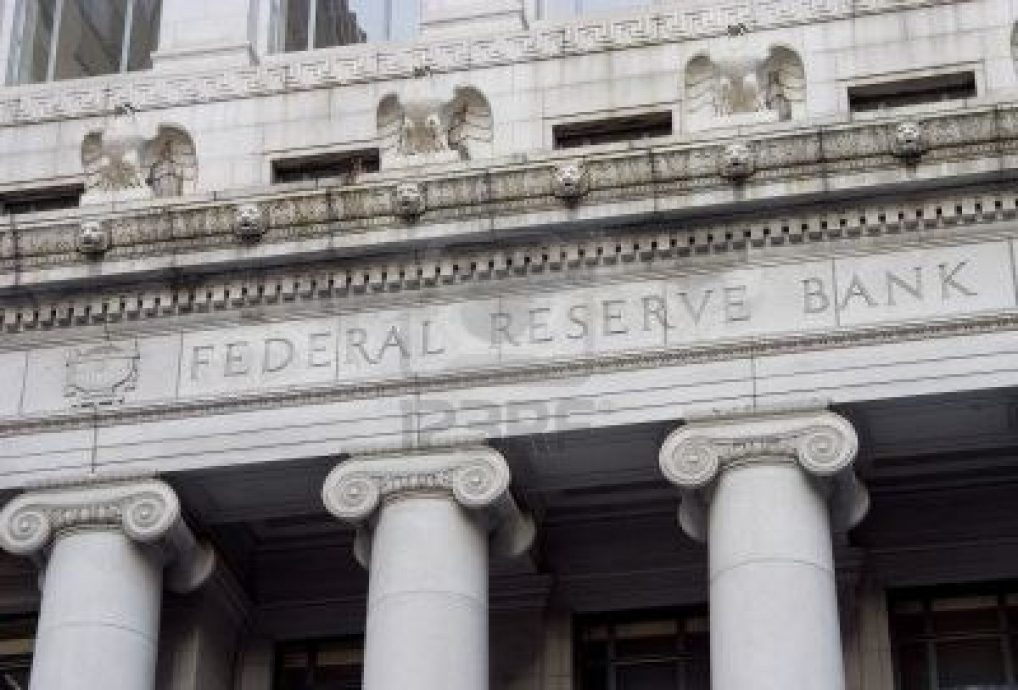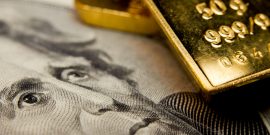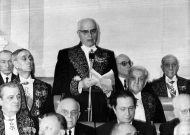The gold standard’s history reminds us that not every economic challenge demands a centralized political solution.
Is the Federal Reserve a Philosopher King?
A conference was held at the American Enterprise Institute on March 20, 2014 on the question: Is the Federal Reserve a philosopher king or servant of the treasury? Alex Pollock, a frequent contributor to Law & Liberty and participant in the AEI discussion, offers here in condensed form the arguments and the instructive history presented.
Peter Conti-Brown: “False Dichotomy”
The title question was chosen by the stylistically elegant and provocative Alex Pollock. But I am going to claim a false dichotomy: there are elements of both extraordinary autonomy and total subservience in the Fed’s history and in its structure, and of something else. Indeed, I think the entire conversation about Fed independence, in the form that conversation usually takes, is confused.
The two usual questions are these: Is the Fed independent? And should it be? I think these common questions are essentially incoherent. What does independence even mean? As I argue in a forthcoming book, The Structure of Federal Reserve Independence, there are four threshold questions that must be addressed before we can grapple with this definitional question. First, from whom is the Fed independent? Second, how is that independence established and regulated? Third, independent to what end? And finally, what or whom are we even talking about when we say “the Fed”? The Chair? The Board of Governors? The Federal Open Market Committee? The Fed’s economists?
The traditional idea of Fed independence says the following: Fed independence is a legal separation between the Fed Chair and the President for purposes of managing the currency. The idea is that the public cannot trust the elected politicians to conduct monetary policy in its own long-term best interests and so needs an independent Fed Chair who can make the hard decisions that politicians, faced with constant elections, will not. In consequence, it is said, the Fed becomes a technocratic institution that exists “above politics.”
This is inaccurate—in some cases, this account is too narrow, in other cases, just inaccurate outright. Law does not play the role in Fed independence that protagonists and antagonists have supposed. There are other outside audiences—beyond the President, beyond Congress—who influence the Fed’s policies. There is much more to the Fed than the conduct of monetary policy. And the Fed itself is a complicated institutional ecosystem where individuals and organizations besides the Fed Chair influence Fed decision-making.
Understood in this more nuanced way, Fed independence is best defined as the space within which the Fed makes its policies. And, importantly, that space changes over time.
Let’s consider two examples of Fed policy-making with this more complicated conception of independence in mind, to see how it challenges the idea that the Fed can fit comfortably into either category of “Philosopher King” or “Servant of the Treasury,” or even whether the Fed can be defined as independent or not, without further specification of the definition of independence along the lines I propose.
Let’s go back to the beginning. The usual story about the founding of the Fed tells us that it was the Congressional response to the financial panic of 1907. But this is too simplistic. The Panic of 1907 happened in, well, 1907; the Federal Reserve Act in 1913. In the interim, power in Washington shifted from the Republicans to the Democrats, including one of the most consequential Presidential elections in American history in 1912. Woodrow Wilson’s victory—and on his coattails, the transition of power to the Democrats in both Houses of Congress—meant that the stalled legislation on “currency reform,” as it was then called, took on a veritably Wilsonian character.
That character was one of compromise between the Republican ideal of centralization in private hands, and Democratic ideals of decentralization in public hands. The Wilsonian Compromise meant the existence of essentially autonomous reserve banks supervised by the Washington, DC-based, presidentially-appointed Federal Reserve Board. To ensure political control, in the original design the Secretary of the Treasury automatically served as Chairman of the Federal Reserve Board.
One of the main objections Republicans had to this structure was the fear, still widespread today that the keeper of the nation’s currency would be forced to monetize the public debt: that is, print the bills to pay the bills. Almost as soon as the System turned on its lights in 1914, in fact, those fears were well taken—during the First World War, the Fed existed to ensure the orderly functioning of Treasury debt markets.
But post-war, we see the rise of a dynamic between the reserve banks and the Secretary of the Treasury. The first Republican Treasury Secretary to preside over the Federal Reserve Board was Andrew Mellon, a quiet, inscrutable, ultra-wealthy banker. Mellon wanted to liquidate the national debt—not reduce it, but eliminate it—and there were budget surpluses for every year but one during his tenure. Because the reserve banks had purchased so much government debt, and were holding it in order to manage their earnings, they refused to sell. Mellon pressed, explained his position, even ordered the sale. The banks refused. Mellon’s desire to liquidate the debt not only was inconvenient to the banks, but inimical to their interests. The debate was essentially taken to the Governor, as he was then called, of the Federal Reserve Bank of New York, Benjamin Strong. Strong didn’t endorse Mellon’s plan, and Mellon dropped it.
So it was that the reserve banks, to manage their earnings, stared down the Secretary of the Treasury. The reserve banks showed some strong independence, to be sure. But for exactly the opposite policy that we would expect under the standard account: the politician wanted to liquidate the public debt; the central bank wanted to monetize it. Was the Fed independent in this case?
The old Federal Reserve Board system was abolished in 1935, replaced by the “Board of Governors” model. Treasury-Fed relations continued to evolve and change, giving us one of the most important instances of Fed-Treasury cooperation in the history of central banking: the Fed-Treasury under Bernanke and Paulson/Geithner. This instance, too, shows us that Fed independence is a messy, complicated, and deeply interesting business.
In the Fed-Treasury coordination in 2008 and 2009 and in the unconventional monetary policy that followed, how should we characterize the Fed’s actions? Is it exercising undemocratic and inappropriate control over the global economy, acting as a stooge for the Administration, or something else entirely?
I think it is something else entirely. There is no question that the Fed and Treasury operated cheek by jowl in 2008, culminating at the end with the personnel change that took the President of the Federal Reserve Bank of New York and made him the Secretary of the Treasury, despite his youth and lack of political connection to the President-elect.
What can we make of this coordination for purposes of understanding Fed independence? Put aside the various decisions that have been criticized—from the shotgun marriage between JP Morgan Chase and Bear Stearns to the mixed signals followed by the bankruptcy of Lehman Brothers—and focus on the structural question: Should there have been no coordination between the Fed and the Treasury? To paraphrase Alan Blinder, should Ben Bernanke not have taken Hank Paulson’s calls?
I know a lot of people think the Paulson-Bernanke-Geithner triumvirate should have made different decisions, but I know of no one who thinks they should have made those decisions independently of each other. Fed-Treasury coordination in the face of financial crisis is not new. Nearly every financial crisis has had similar kinds of coordination. There is no chance it will ever be different.
Bernard Shull: “The Checks and Balances are Gone”
Fresh out of graduate school in the late 1950s, I walked into the Federal Reserve Bank of Philadelphia looking for a job. I never imagined I was asking for employment from “a philosopher king.” But those were different times, when the Fed took so low a profile. Now the Federal Reserve is widely recognized as one of the most powerful organizations in the world.
Its enormous influence on all things that matter has raised difficult questions about its independence and its policies. The questions have been around for a long time–going back to America’s entry into World War I in 1917, when the American Economic Association took the Fed to task for keeping rates low to support the Treasury’s borrowings.
In 1916, two years after the Fed opened for business, Benjamin Strong complained to one of his directors that the System had not found its place in the banking structure of the country–it seemed to be “a sort of excrescence.” To another director, he wrote, that the Fed would not establish itself until it met the test of a real crisis.
It found its crisis when America entered World War I. Strong told the chairman of his board that they must persuade Secretary of the Treasury William McAdoo to permit the reserve banks to become the real fiscal agents for the government–then their place in the country’s banking system would be established for all time.
And so it turned out. The reserve banks became centers for the promotion of government bond issues. In the 1920s, much in the way of coordination was accomplished. The reserve banks and Board organized a reserve bank committee to coordinate open market operations. The Board reformulated the discount mechanism, changing the rules to effect a consistency with open market operations.
In 1927 the McFadden Act substituted reserve bank charters of indefinite duration in place of the 20-year, limited life charters it had initially granted in 1913. Supporting the Treasury had established the Federal Reserve as a critically important organization. It was now clear that the Fed was an extraordinarily valuable entity that might be repaired, if necessary, but never extinguished, as the First and Second Banks of the United States had been.
At the Fed’s origin the System included representation for every recognized economic interest group in the country: bankers, borrowers, and a wide variety of commercial and regional interests. The fragmentation of authority was expected to produce a ‘clash of interests’ that would protect all. Paul Warburg, an original member of the Board, viewed it as a “system of checks and double checks.”
The arrangement eroded in the heat of World War I. The shift from the original limited objectives to a modern Federal Reserve eliminated the original internal governance in favor of officials who were to commit to national rather than regional or commercial aims. Once the Fed was released from direct Treasury control in the 1950s, it became evident that no other governance had been substituted. Congress made an attempt to intensify its oversight in the 1970s with the Humphrey-Hawkins Act. But it has not had much success.
Over its history, the Fed has clearly been both a servant of the Treasury and an independent entity. By and large, the philosopher-kings at the Fed have known when it is advisable to become servants of the Treasury. (Philosopher-kings know this sort of thing.)
My own view is that for the benefit of those that Fed policy affects, and that includes just about everyone, we can’t depend on “the best and the brightest” without some form of effective governance. We need a replacement for what was lost when the Fed became the Fed that we know.
Alex J. Pollock: “Not a Philosopher-King”
The election of 1912 meant, as Peter said, that “legislation on ‘currency reform’ took on a veritably [Woodrow] Wilsonian character.”
Shortly after the Federal Reserve Board was formed, there arose a dispute about the standing in government protocol of its members. They thought they were not given high enough status in the order in which they would enter formal events. The issue got raised all the way to the President himself. Said Wilson, “They can come in after the fire department for all I care.”
In retrospect, this was most apt, for the Fed does come into financial crises as the fire department. However, as in its anti-inflation program of the 1980s and its financing of the collapse of the housing bubble in 2008, they are often fighting fires they themselves stoked!
It is said that Carter Glass, a legislative father of the Federal Reserve Act, in subsequent years liked to ask Federal Reserve witnesses in Congressional hearings, “Do we have a central bank in the United States?” The required answer was “No—we have a federal system of reserve banks.” This story emphasizes the original federal design of the Federal Reserve, and the internal checks and balances between the reserve banks and the Washington board, as Bernie instructively discussed.
Bernie has said that the reserve banks were originally “quasi-autonomous,” and Peter that they were “essentially autonomous.” Of course, that is entirely gone now.
Peter reasonably asked, “What or whom are we talking about when we say ‘The Fed’? The Chair? The Board of Governors? The Federal Open Market Committee? The Fed economists?” Notably, his list does not even mention the reserve banks.
One idea to reform the governance of the Fed is to re-create more authority in the reserve banks. Congressman Scott Garrett has introduced a bill which goes in this direction. An obvious possibility would be to give all the reserve banks a permanent vote on the Open Market Committee. Since the members of the Board of Governors now get seven votes to a maximum of six for the reserve banks, they can always control the decision. But you could have seven plus twelve or 19 votes, which would be a return to a more federalist idea.
There is a great historical irony in the situation of Federal Reserve governance today. The traditional idea is that elected politicians are always inflationists, and we therefore need an independent, sound money central bank to resist them. But what do we do when the central bank itself becomes inflationist? The Fed has become formally committed to perpetual inflation and is busy sacrificing savers and making leverage cheap.
Can or could a sound money Congress control an inflationist Fed?
In any case, the Fed is not and can never be a philosopher king. This is because philosopher-kings by definition must have superior knowledge, but when it comes to the economic and financial future, the Fed has no superior knowledge whatsoever. “Monetary policy remains more art than science,” as one distinguished student of the matter recently wrote, “and the artists remain too human and too fallible.” Too true.
Of course, the theory of philosopher-kings has been a bad idea since Plato proposed it 2,400 years ago. In a real republic, as opposed to Plato’s Republic, everybody is subject to checks and balances.
How checks and balances should operate on the current very powerful, systemic risk-creating Fed is what we are trying to figure out.
Peter has written that the best way to influence the Fed is to “win the academic [let’s say rather ‘intellectual’] debates.” This echoes Keynes’ celebrated line that “it is ideas, both when they are right and when they are wrong, which are dangerous for good or evil.” The ideas which come to govern the minds of central bankers are most certainly “dangerous for good or evil.” The more independent the central bank is, the more this is true.
Peter Conti-Brown is an academic fellow at the Rock Center for Corporate Governance, Stanford Law School; Bernard Shull is Professor of Economics emeritus, Hunter College of the City University of New York; Alex J. Pollock is a resident fellow at the American Enterprise Institute and former President and CEO of the Federal Home Loan Bank of Chicago.



